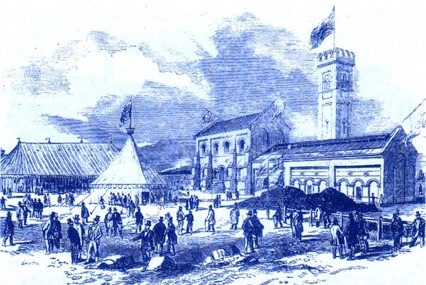London, one of the world’s most iconic cities, is not only famous for its rich history, cultural heritage, and stunning architecture, but also for its advanced water supply infrastructure. The development of London’s water supply system has been an extraordinary journey, driven by the expertise and innovation of civil engineers. In this article, we will delve into the pivotal role that civil engineering has played in shaping and evolving London’s water supply over the centuries.
The Early Days: A Thirsty City
London, with its growing population, faced numerous challenges in meeting the water demands of its residents during the early days. The city relied heavily on the River Thames as its primary water source, but it soon became evident that this alone couldn’t sustain the needs of a rapidly expanding urban center. To address this issue, civil engineers began implementing various measures to improve the water supply system.
The Birth of Aqueducts
One of the most significant advancements in London’s water supply infrastructure was the construction of aqueducts. These structures allowed water to be transported over long distances, ensuring a more reliable and consistent supply. The New River, constructed in the 17th century, stands as a testament to the ingenuity of civil engineers during this time. This man-made watercourse stretched for nearly 40 miles, delivering fresh water from springs near Hertfordshire to the heart of London.
Embracing Technology: The Arrival of Waterworks
As the population continued to grow, the demand for water increased exponentially. To meet this demand, civil engineers turned to advanced technologies. The 19th century witnessed the establishment of waterworks, which revolutionized the water supply system in London. These waterworks utilized steam-powered engines to pump and distribute water to different parts of the city, ensuring a more efficient and reliable supply.
The Great Stink and the Birth of Modern Sewerage
The mid-19th century brought forth a major crisis that propelled civil engineering to address London’s sanitation issues. The Great Stink of 1858, caused by the overwhelming stench emanating from the polluted River Thames, became a catalyst for change. Civil engineers, led by Sir Joseph Bazalgette, embarked on the monumental task of constructing a vast sewerage system to improve the city’s sanitation. The resulting network of intercepting sewers, pumping stations, and treatment works transformed London’s sanitation infrastructure and significantly improved public health.
Resilience and Innovation: Surviving the Blitz
London’s water supply system faced its most significant test during World War II. The city endured heavy bombings, with strategic targets, including water infrastructure, being prime targets. Civil engineers displayed remarkable resilience and innovation in restoring and reinforcing damaged waterworks and pipelines. Their efforts ensured that London’s water supply remained operational, even in the face of adversity.
Meeting Modern Challenges: Sustainability and Conservation
In the 21st century, civil engineering in London’s water supply has shifted its focus towards sustainability and conservation. As concerns about climate change and environmental impact grew, engineers began implementing innovative solutions to reduce water consumption, enhance water treatment processes, and promote water reclamation. Rainwater harvesting, greywater recycling, and the use of advanced filtration systems are just some of the practices adopted to ensure a more sustainable water supply for London’s future.
Conclusion
London’s water supply evolution is a testament to the indomitable spirit and ingenuity of civil engineers. Through centuries of innovation, they have transformed a thirsty city into a model of water supply efficiency and sustainability. From the construction of aqueducts and waterworks to the development of modern sewerage systems, civil engineering has played a pivotal role in shaping London’s water infrastructure. As the city continues to face new challenges, civil engineers will undoubtedly rise to the occasion, pioneering innovative solutions to ensure the reliable, safe, and sustainable supply of water for generations to come.
